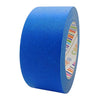
Console Tape vs Masking Tape
, 3 min reading time

, 3 min reading time
Whether you need to label a mixing console, mark an actor’s position, or organise gear cases, console/paper tape is an indispensable tool for every film set. Unlike masking or DIY tape, console tape ensures every department stays organised, whether you’re working with cameras, sound equipment, or props. Here’s an in-depth look at console tape, its various uses on set, and why it outshines standard masking tape.
When it comes to marking and labeling on set, not all tapes are created equal. Console, or paper tape, stands out as a must-have for film crews due to its ease of use and versatile nature. While masking or DIY tape may work for basic applications, console tape offers specialised features that make it the ideal choice for the demands of a shoot.
Here’s an in-depth look at console tape, its various uses on set, and why it outshines standard masking tape.
Console tape, also known as paper tape, is a high-quality, easy-to-use adhesive tape specifically designed for labeling and organisation. It is made with a paper-based surface that is ideal for writing, making it perfect for marking equipment, labeling consoles, or creating temporary labels on set.
Pictured: A range of console/paper tapes in various colours (including fluorescent) and sizes (1/2 inch, 1 inch and 2 inch)
Console tape comes in a wide variety of widths and colours to suit different needs.
Marking Equipment:
Console tape is often used to label cameras, monitors, sound equipment, and cases. Its writable surface ensures crew members can quickly and clearly mark gear with details like names, shot numbers, or settings.
Console Labeling:
On sound or lighting consoles, paper tape is used to mark faders and controls. The clean, easy-to-read labels help technicians keep track of settings in real-time.
Floor Markings:
Use console tape for marking positions on the floor, such as actor or camera placements. Its easy removal ensures no residue is left behind.
Temporary Labels:
Console tape is great for creating temporary labels on costumes, props, or set pieces. It sticks reliably but can be removed without damaging surfaces.
Script and Call Sheet Notes:
Assistant directors and script supervisors often use console tape to stick notes or call sheets onto surfaces for quick access.
While masking tape may seem like a cheaper alternative, console tape is purpose-built for professional use. Here’s how it compares:
| Feature | Console/Paper Tape | Masking/DIY Tape |
|---|---|---|
| Writeability | Smooth, writable surface | Often uneven, harder to write on |
| Adhesion | Reliable but easy to remove | Can leave residue or damage |
| Colours/Variety | Wide range of colours for coding | Limited in professional shades |
| Durability | Designed for repeated handling | Tears or wrinkles easily |
| Residue-Free Removal | Peels cleanly, no marks left behind | Often leaves sticky residue |
Film sets require speed, efficiency, and clarity. Console tape delivers on all fronts by offering:
Unlike masking or DIY tape, console tape ensures every department stays organised, whether you’re working with cameras, sound equipment, or props.
Whether you need to label a mixing console, mark an actor’s position, or organise gear cases, console/paper tape is an indispensable tool for every film set. Check out the full range of high-quality options available at CineStore to find the perfect tape for your production needs.
Don’t settle for less—equip your crew with the tape that works as hard as you do!